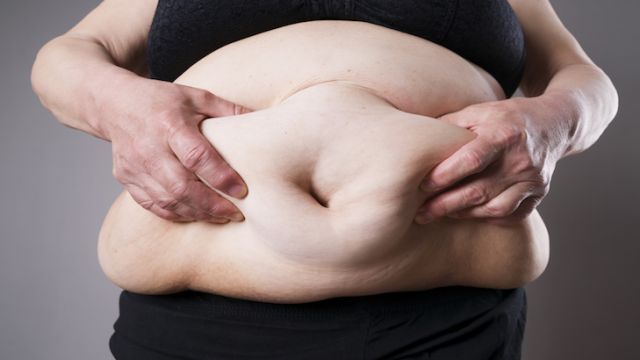
America has a growing problem with obesity. The Centers for Disease Control and Prevention report that now four out of 10 women in the United States is morbidly overweight, meaning they are so overweight that their health is at serious risk.
The findings hardly come as a surprise, given that rates of obesity for both men and women have been on the rise for decades. But it is the first time that obesity rates exceeded the 40 percent threshold for women, a statistic many health experts described as downright scary.
“It’s a really alarming figure, and it’s alarming that it’s continuing to go up despite government calls to action on weight loss and healthy eating,” says Dana Hunnes, a dietician at UCLA’s Medical Center.
A decade ago, obesity rates for men and women were roughly the same — about 35 percent — but for some reason the incidence of obesity has spiked dramatically for women, particularly over the last five years. Health officials did not offer an immediate explanation for the sudden increase.
Measuring Obesity
The term “obese” refers to people who are not just overweight but morbidly overweight. The CDC and other health organizations utilize a measure known as the Body Mass Indicator (BMI) to help determine if a person is obese. A person’s BMI is calculated by dividing their weight (in kilograms) by the square of their height (in meters). A CDC online tool automatically calculates a person’s BMI using pounds and inches. A separate CDC calculator is used for children and teens.
For an adult, a BMI of:
- less than 18.49 is considered underweight
- between 18.5 and 24.99 is considered normal
- between 25 and 29.99 is considered overweight
- and over 30 is considered obese
Experts caution that the BMI is only one tool to help determine a healthy weight for a person’s height. Athletes and otherwise fit individuals often have BMIs that exceed or deviate substantially from the norm. After all, muscle weighs more than fat.
Also, many heavyset people are perfectly healthy. Consequently, the BMI is not always the best measure for everyone. As always, you should consult with your doctor to help determine what weight range is right for you.
The demographics of obesity
Obesity rates have been on the rise since the 1980s. Thirty years ago, slightly less than 17 percent of the population was obese. Today, about 38 percent of Americans meet that criterion. Among females, rates are highest among African American women (57 percent) followed by Hispanic women (47 percent) and Caucasian women (38 percent). Just 12 percent of Asian women are obese.
The obesity epidemic is affecting children, too. The CDC found the following obesity rates in young people:
- Children under the age of 6 — 17 percent
- School kids age 6 to 11 — 20 percent
- Adolescents — 21 percent
Not surprisingly, America leads the world by a large margin when it comes to the condition. According to the World Health Organization, only 15 percent of women worldwide are obese, whereas the rate internationally for men stands at 11 percent.
Obesity and disease
Obesity is a known risk factor for many health maladies, including Type 2 diabetes, cardiovascular disease and numerous forms of cancer. The British historian Timothy Garton Ash notes a tragic irony in this largely American phenomenon: Many in the U.S are dying because their bellies are too full, while many in the rest of the world are dying because they don’t have enough to eat.
Obesity is the consequence of many factors. Diet, activity levels and genetics all play a role. Nevertheless, numerous health experts believe a combination of a sedentary lifestyle and a higher consumption of processed and sugary foods is behind America’s expanding girth.
Shrinking America’s waistline will not be an easy task. Health officials, however, consider it a national imperative. Obesity is linked to poor health and diminished productivity in the workplace. In fact, the U.S. military reports that is becoming significantly harder to find suitable recruits who can meet their basic fitness requirements.
What can be done?
Reversing the obesity trend will take sustained and determined effort on both an individual and national level. For parents who hope their children will escape the obesity epidemic, encouraging healthier eating and lifestyle habits is essential.
For instance, nutritionists recommend keeping portion sizes modest, serving whole foods (as opposed to processed ones) and not using food as a reward. They also strongly suggest limiting the intake of sweetened beverages. Similarly, fitness experts advise parents not to encourage their kids to eat or snack while watching TV. They also recommend planning fun, family-oriented exercise routines to keep kids more active.
Most importantly, health experts insist that modeling healthy habits are the best way for parents to teach their children to make the right choices. For most people, obesity is not destiny. It is a matter of better public policy and making more informed lifestyle decisions on the individual level.
— Scott O’Reilly

